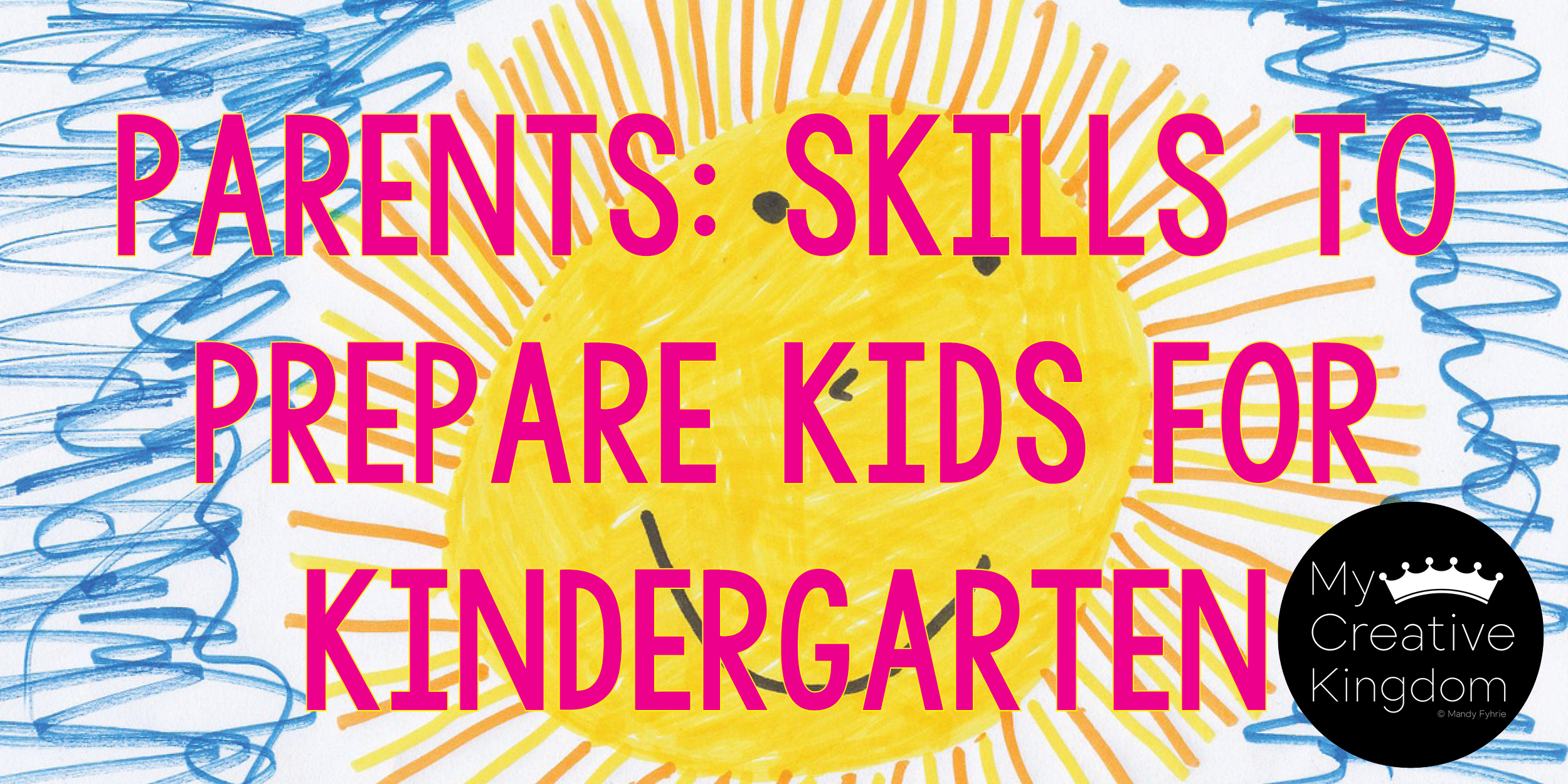If you are just now tuning in, the two previous blog posts talked about preparing kids with the “soft,” and “intermediate,” skills to be ready for kindergarten. This blog post will list more advanced skills. These are all a general guideline of what I have seen in kindergarten over the last few years.
In addition to everything in the basic and intermediate skills section, children are able to independently…
Life Skills:
- Persists in solving problems multiple ways before asking for help
- Plays board games for fun and to learn about taking turns
- Tie their shoes
- Attend to one activity for 20 or more minutes
- Playing by the rules of the game (without cheating/taking short cuts) automatically
Fine/Gross Motor Skills:
- Hop, skip, gallop, jump with both feet and on one foot
- Catch and throw a ball
- Write for extended periods of time: 10 or more minutes
- Use liquid glue – a dot, not a lot!
- Cut more precisely and finer objects with smaller perimeters
- Manipulate play dough to make more complex structures or forms
- Sting beads to make a necklace
Language:
- Follow 4 or more step directions (ex: put your dishes away, clean up the table, brush your teeth and put on your pajamas)
- Attend to a conversation with 4 or more exchanges and stay on-topic
- Recall and orally tell an event in one’s own
life in a logical order with a beginning, middle, end and conclusion. Should
include characters and setting.
- Ex: I went swimming this summer with my mom at the park. We played Marco Polo first. Next, we just swam around. Last, we decided we were getting too tired and decided to go home. We took showers, got dressed and went home. It was such a great day!
Academics:
- Knows the colors of the rainbow and in order (ROYGB)
- Can create more complex patterns, name the pattern and make a pattern based on the name given (ABBA, AABBC, etc.)
- Can read many sight words and can read simple or more advanced readers
- Use pictures to follow directions (how to put together a cut and paste craft)
- Put shapes together in new ways to make pictures or new shapes (two triangles make a square and six can make a hexagon)
- Identify all upper case and lower-case letters as well as their sounds without pictures and in random order
- Match first letter sounds of words to matching pictures or be able to write/label images with these letter sounds heard in words (consonant-vowel-consonant words, such as “cat” or “fens” for “fence.”)
- Write all upper- and lower- case letters with proper formation and grip (writing a “c,” and then a line is not an a. Rather it is a c, you go back up to bump up and go straight back down). Proper formation is essential for kids when they start to write more fluently. The fewer inefficient writing skills, the better.
- Count to 100 starting at any number other than one
- Add and subtract fluently within 5 or up to 10 (I say a number; student tells me the missing number without manipulatives or objects to help)
- Solve addition and subtraction problems (within 5) in more than one way: using pictures, number line, write an equation.
- Write first and last name with capital at the beginning and lower case afterward
So, what if my kid isn’t there yet? That’s okay! If you have a good teacher and understanding school, your teacher knows that all kids have strengths, areas for growth and will know how to help scaffold your child’s learning to get them to where they need to be. Just keep in mind that the partnership between you and the teacher is imperative to your child growing the most that they can in a year. We want kids to love school. That being said, sometimes kids need extra help in some areas. Make the learning engaging, and kids always rise to the challenge. They want to please you and they strive for the independence. They are so proud when they have made progress. Little steps are the way to go. Every kid can learn. Every kid can grow. Every kid is capable.
